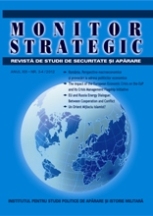Energia nucleară ca obligaţie şi alegere. Poate fi thoriul o soluţie pentru viitorul economic al Indiei?
Nuclear Energy as obligation or choice. Can Thorium be a solution for India’s economic future?
Author(s): Silviu PetreSubject(s): Economy, Government/Political systems, Military policy, WW II and following years (1940 - 1949), Peace and Conflict Studies
Published by: Editura Militară
Keywords: nuclear technology; deterrence; Jawaharlal Nehru; Homi Bhaba; uranium; thorium; Robert Gilpin; Thorstein Veblen; US-India nuclear agreement;
Summary/Abstract: As inextricable part of modernity, technology is pursued for multiple rewards: enhancing knowledge, gaining power and respect, improving human life and work. Between nations and societies, acquiring technology has more than an economic meaning- it is a way of boosting one’s status. Nuclear energy as a special case marked the development of postwar societies possessing it. As military application, during the Cold War and after, nuclear deterrence spelled a strategic language that set apart nuclear governments from those deprived of the bomb. For smaller, decolonized countries, acquiring nuclear technology with both civil and military ends symbolized a statement of their sovereignty and an assurance against superpower interference. Such is the case for the Indian post 1947 nuclear history. Using Thorstein’s Veblen notion of conspicuous consumption, the present article will try to answer to the question why the elites from New Delhi did not build from the beginning thorium based nuclear reactors, even though India possess rich deposits of such metal and Homi Bhaba’s plan envisaged thorium grid infrastructures. We will show that the Indian nuclear research turned to uranium following a similar path with Western and Soviet industrial build-up. As uranium is much easier to weaponise than thorium, Indian political and scientific elites wanted fungibility between their civil and their military structures.
Journal: Monitor Strategic
- Issue Year: 2013
- Issue No: 1-2
- Page Range: 122-137
- Page Count: 16
- Language: Romanian

